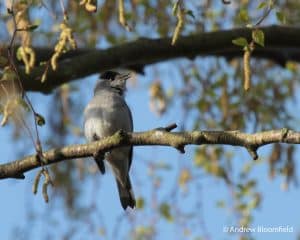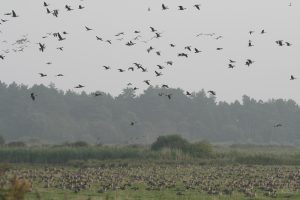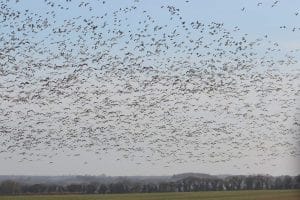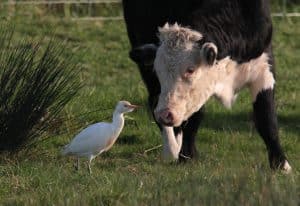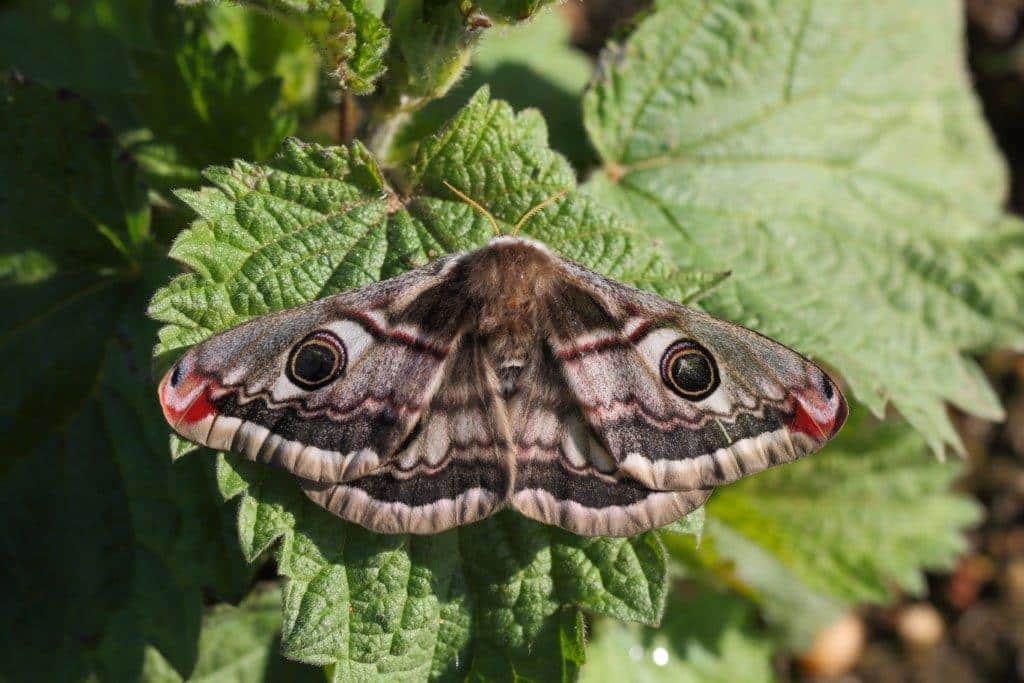
A Spider In The Sand
May 31, 2018 | Nature news | 7 minute read

The Emperor Moth, a spectacular but seldom seen insect
It has been really pleasant to finally have some nice warm weather after the cold late winter and early spring. The first bank holiday in May was in fact one of the hottest on record. As a result the reserve has literally come alive with all manner of insects. Sometimes when we have prolonged cold spells insects can be in short supply yet a pronounced rise in temperature can suddenly change all that. Here at Holkham, with such a diversity of habitats the amount of insects we have is quite staggering.
One local enthusiast from Wells has made it his mission to catalogue all the beetles of the reserve and this list currently sits at 830 species. An amazing tally, but considering there are over 4000 species in Britain it is hardly surprising our list is still growing. Each month we take out the county spider recorder and our local beetle expert to sample different habitats on the reserve and invariably something new occurs on each visit. With the summer upon us we now do the same with a local group of moth enthusiasts. By doing so we are not only building up our species lists for the reserve but also highlighting what occurs in specific habitats and this in turn helps with management decisions. Within such a high number of species it is hardly surprising that some rare and habitat specialist invertebrates occur.
For us at Holkham sometimes it seems like the rare is the common place – lots of unusual species that are rare elsewhere make their home here. One thing we will be trying to do in the future is to find out even more; there are still lots of gaps in our knowledge. There are countless other insects; flies, bugs, bees, wasps etc that have yet to be investigated fully. We went someway in starting that process when a group of very keen entomologists and county recorders came for a weekend out on Wells East Hills. This involved boating out each day (thanks to the kind assistance of Wells Harbour Trust) and letting the experts loose with sweep nets, various traps and leaf blowers set on suction to sample various spots within the dunes and the saltmarshes. A good time was had by all yet as many of these tricky to identify species have to be examined with microscopes before naming, the full list of their finds is still awaited.
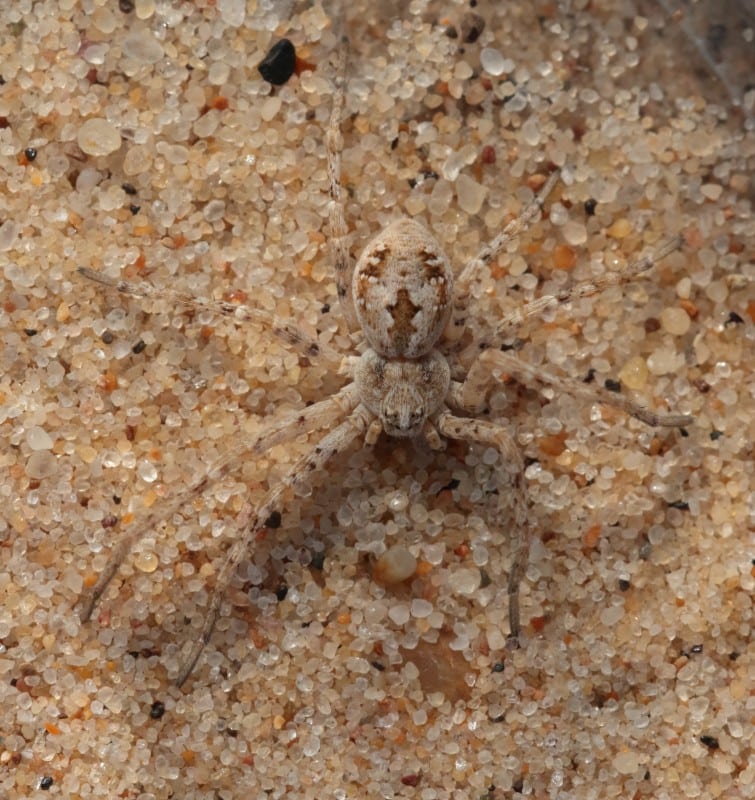
The Sand Running Spider, (Philodromus fallax) a real rarity found on the reserve for the first time
For me personally I managed to find something that I have been searching for unsuccessfully for the last three years. It was a spider known as Philodromus fallax sometimes known as the Sand Running Spider and a bona fide rarity to boot. It is found in a very small number of sand dune sites around the coasts of England and Wales and here in Norfolk only previously recorded from four other sites. It has the honour of being a ‘Biodiversity Action Plan Species’ and is classed as Nationally Threatened.
With Holkham having one of the finest stretches of sand dunes in the county it seemed like a species we should have. Yet none had ever been recorded in the past and I had failed in all my attempts to find one. That soon changed at Wells. No sooner had I set foot onto the sandy beach I literally almost trod on one! Beneath where my boot was about to fall, a glimmer of movement within the sand revealed this subtle cryptic arachnid. Although quite small (about 6mm) it has proportionately long legs which enables it to move very fast across the sand. When it senses danger it stops suddenly and instantly blends into its environment. Its colours are the absolute perfect camouflage in the sand. Once I got my eye in I managed to find a further three. So what was different with this location to other spots on the reserve?
The beach does actually look slightly different from that at Holkham, a narrower shelf of sand over shingle with wispy clumps of marram and isolated clumps of Shrubby Seablite so whether this combined micro habitat had a bearing on its presence can only be surmised. What was very apparent was the amount of small holes within the sand, hundreds if not thousands along a relatively small stretch of beach. These were the burrows of another spider that is equally cryptically marked, Arctosa perita that sometimes goes under the very charismatic name of the Sand bear-spider. Like the last species this spiders hunts for its prey without the aid of a web, letting its stealthy movements and camouflage do the work.
Whilst this species does occur on the beach at Holkham, it is never in such abundance. The answer can only be the lack of people who walk there. Any large amount of footfall would undoubtedly trash the whole colony. Referring to the excellent website British Spiders – Spider Recording Scheme which is essentially an online atlas of every UK species of spider (http://srs.britishspiders.org.uk/portal.php/p/Summary/s/Philodromus+fallax ) it states that the Running Sand Spider has undergone a 60% decline and lists public pressure on beach edges (the yellow or fore dunes) as being the major problem. Such statistics really highlight the value of quiet unvisited areas in nature reserves.
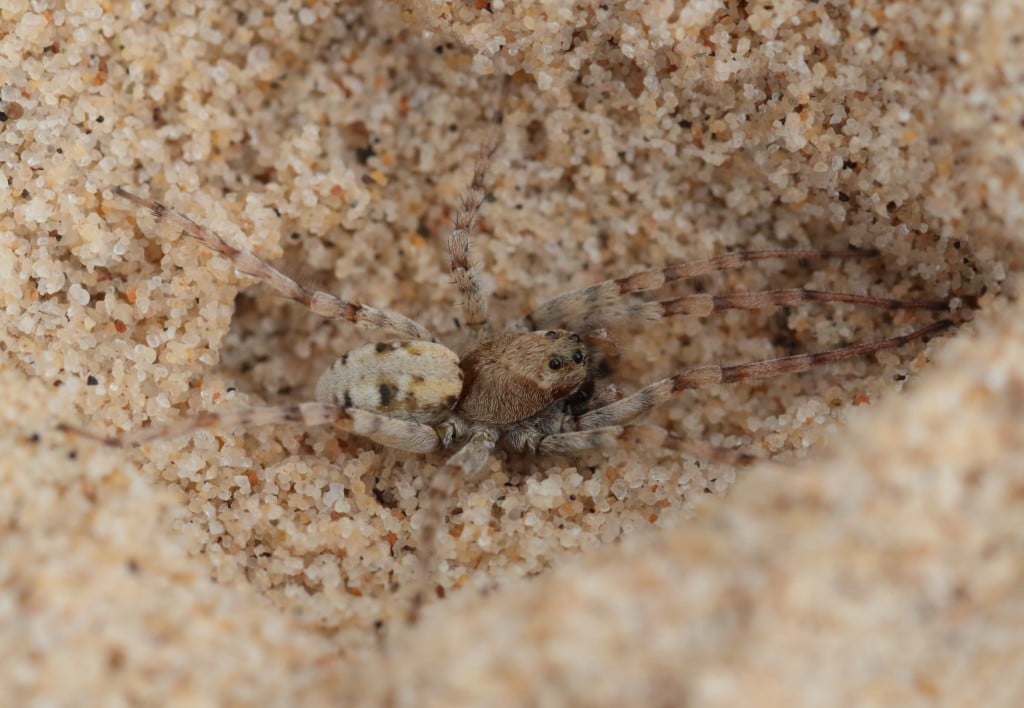
The Sand Bear Spider, another highly camouflaged spider of the sand dunes
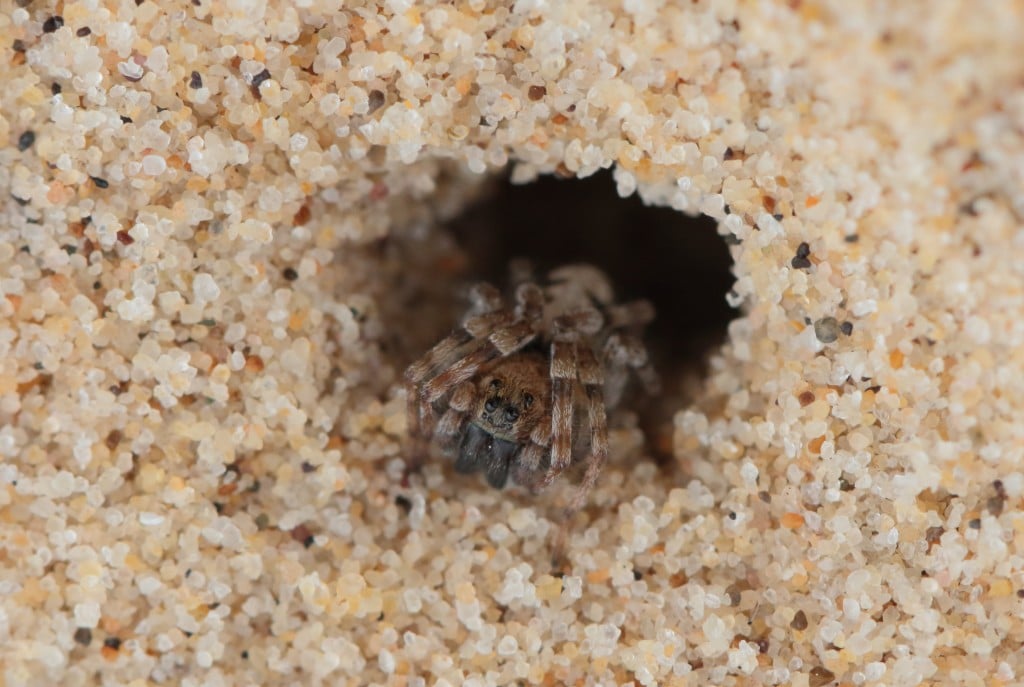
When disturbed they retreat to burrows where they undertake their hunting excursions from
The trip was not all about spiders. Some really beautiful moths were found too – from the small and exquisite Pine Beauty to the large Emperor. The latter is very distinctive and an instant stop you in your tracks species. It is marked with large eyes (rather like those on a Peacock butterfly) and the fact that it flies in the daytime and lays its eggs on brambles, willows and hawthorn makes it one that could be seen in a range of habitats.
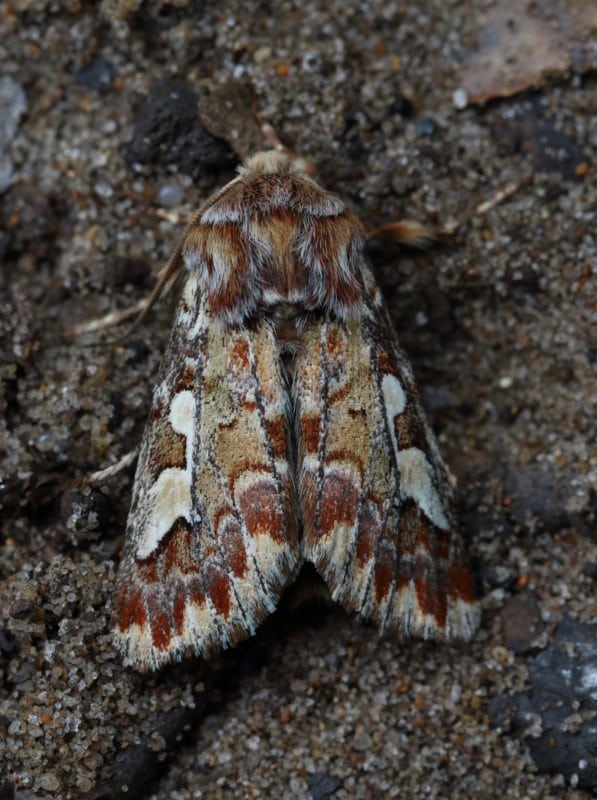
The Pine Beauty, an aptly named colourful species
Another distinctive species found was a tiny bug Eurybreyma nigrolineata. Said to be common on saltmarshes, it was surprisingly unrecorded from the reserve. What really became apparent to me was the sheer amount of insects collected, there is life literally everywhere. There really is a microscopic world at our feet so next time you’re out in the countryside, pause and take a closer look in any one spot, you might be really taken aback at what you see!
View all latest blog posts here.
